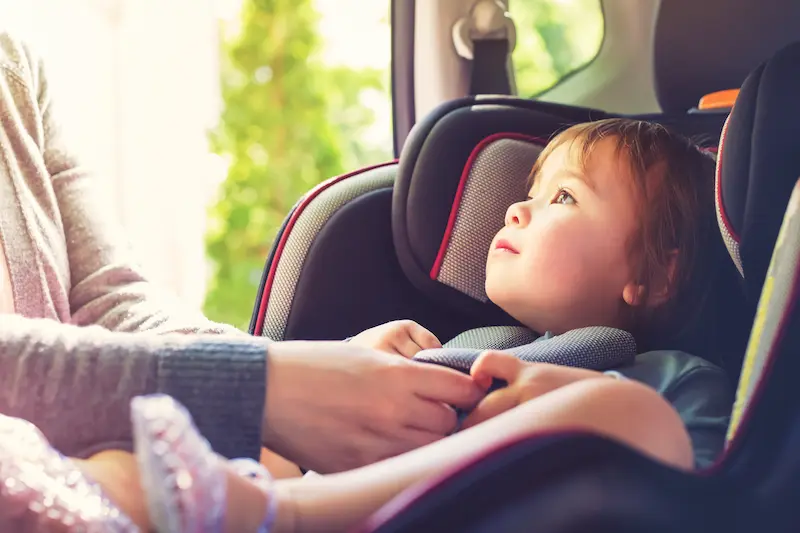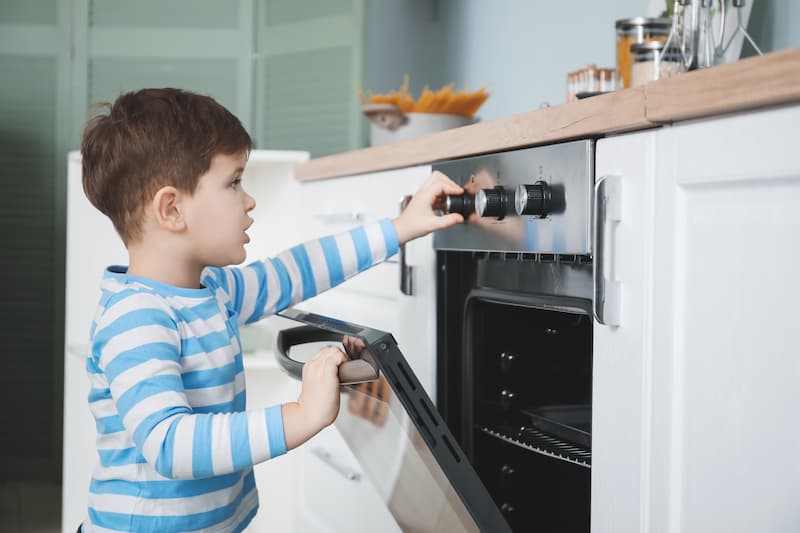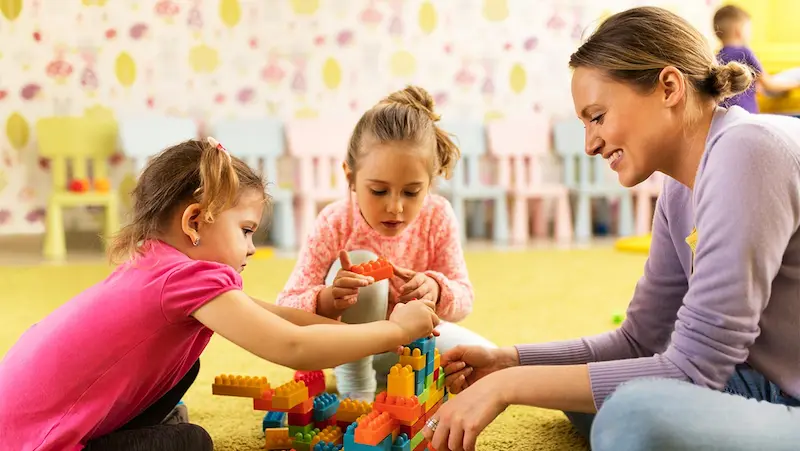As parents and caregivers, the safety of our children is our top priority. We want to create an environment where they can thrive and explore, while also ensuring their well-being. This comprehensive guide aims to provide valuable insights and tips to help parents and caregivers navigate the challenges of child safety, ensuring their little ones grow up in a secure and nurturing environment.
This introduction to child safety aims to create awareness and equip adults with the knowledge and tools to protect children from potential dangers, both in the physical and digital realms. From childproofing homes and promoting road safety to educating children about online hazards, this topic delves into crucial aspects that contribute to a safe and secure environment for our young ones.
Table of contents
- 1. Understanding the Importance of Child Safety
- 2. Identifying Potential Hazards at Home
- 3. Childproofing: Creating a Safe Space
- 4. Safe Sleep Practices for Babies
- 5. Car Seat Safety: Buckle Up for Every Ride
- 6. Safe Playgrounds and Outdoor Activities
- 7. Water Safety: Drowning Prevention
- 8. Internet Safety: Protecting Children Online
- 9. Fire Safety: Preparing for Emergencies
- 10. First Aid for Common Childhood Injuries
- 11. Child Safety and Mental Health
- 12. Promoting Healthy Relationships
- 13. Safe Handling of Medications
- 14. Allergen Awareness and Management
- 15. Emergency Contact Information
- 16. Home Alone: Safety Rules
- 17. Safe Transportation: Biking and Walking
- 18. Child Safety and Pets
- 19. Child Safety During Natural Disasters
- 20. Safeguarding Personal Information
- 21. Cybersecurity for Children
- Conclusion
- Frequently Asked Questions (FAQs)
1. Understanding the Importance of Child Safety
Child safety is not just about preventing accidents; it’s about fostering a sense of security and well-being for children. When children feel safe, they can explore and learn with confidence, developing essential skills for their future. Understanding the importance of child safety is the foundation of effective parenting and caregiving.
2. Identifying Potential Hazards at Home
Creating a safe home environment is essential for child safety. Identify potential hazards such as sharp objects, toxic substances, and tripping hazards. Secure furniture and use safety gates to prevent access to dangerous areas. Keep cords and strings out of reach and install window guards on upper floors.
3. Childproofing: Creating a Safe Space
Childproofing is an ongoing process that involves adapting your home as your child grows. Install safety latches on cabinets, use outlet covers, and secure heavy furniture to the wall. Childproofing not only prevents accidents but also fosters independence for children to explore their surroundings safely.
4. Safe Sleep Practices for Babies
A safe sleep environment is crucial for infants. Always place babies on their backs to sleep, use a firm mattress with a fitted sheet, and avoid soft bedding or toys in the crib. Share your room with your baby for the first six months to reduce the risk of Sudden Infant Death Syndrome (SIDS).
5. Car Seat Safety: Buckle Up for Every Ride
Proper car seat usage significantly reduces the risk of injury in a car crash. Choose an appropriate car seat for your child’s age and weight, and install it correctly according to the manufacturer’s guidelines. Always buckle up for every ride, no matter how short the distance.

6. Safe Playgrounds and Outdoor Activities
When taking children to playgrounds or engaging in outdoor activities, inspect the equipment for safety and age-appropriateness.
The children gathered in the backyard to play a variety of outdoor games for kids, including tag and hide-and-seek.
Teach children how to use the equipment safely and supervise them at all times. Encourage physical activity while ensuring their well-being.
7. Water Safety: Drowning Prevention
Drowning is a leading cause of accidental death for young children. Never leave children unattended near water, whether it’s a pool, bathtub, or even a bucket of water. Enroll children in swimming lessons and learn CPR yourself to be prepared for emergencies.
8. Internet Safety: Protecting Children Online
The digital world poses unique risks to children. Set parental controls on devices and monitor their online activities. Teach children about cyberbullying, sharing personal information, and the importance of reporting any uncomfortable encounters online.
9. Fire Safety: Preparing for Emergencies
Create a fire escape plan and practise it regularly with your family. Install smoke detectors on every floor of your home and change the batteries twice a year. Teach children how to react in case of a fire and where to seek help.

Teach kids the basics: stop, drop, and roll during fires, and establish an escape plan with a meeting point for the family.
10. First Aid for Common Childhood Injuries
Accidents happen, and being prepared with basic first aid knowledge is essential. Learn how to treat minor injuries like cuts, bruises, and burns. Keep a first aid kit handy and educate children about its contents and how to use them responsibly.
11. Child Safety and Mental Health
Child safety goes beyond physical well-being; it also involves emotional and mental health.
Taking time for self-care is one of the essential mental health tips for parents, as it allows them to recharge and better support their children.
Create a nurturing and supportive environment for your child to express their feelings and thoughts. Encourage open conversations and seek professional help if needed.
12. Promoting Healthy Relationships
Teach children about healthy relationships, respect, and boundaries. Encourage open communication about friendships and peer interactions. Be a positive role model in your relationships and show empathy and kindness and prevent potential harm in their relationships.

13. Safe Handling of Medications
Keep all medications out of reach of children and store them in childproof containers. Administer medications according to the prescribed dosage and seek medical advice when unsure. Teach children about the importance of never taking medicine without an adult’s supervision.
14. Allergen Awareness and Management
If your child has allergies, ensure that family members, caregivers, and schools are aware of the specific allergens. Take necessary precautions to avoid allergen exposure, and have an emergency action plan in case of accidental exposure.
15. Emergency Contact Information
Keep a list of emergency contact numbers readily available for both you and your child. Include contact information for close relatives, healthcare providers, schools, and local emergency services.
16. Home Alone: Safety Rules
As children mature, they may spend time alone at home. Establish safety rules and guidelines for when they are home alone, including not opening the door to strangers and knowing who to call in case of emergencies.

17. Safe Transportation: Biking and Walking
Teach children proper bicycle and pedestrian safety. Always wear helmets while biking and look both ways before crossing the street. Walk in groups whenever possible and use designated crosswalks.
18. Child Safety and Pets
While pets can be wonderful companions, they also require supervision around children. Teach children to treat pets with kindness and respect their boundaries. Never leave young children alone with pets, especially larger or more energetic animals.

19. Child Safety During Natural Disasters
Prepare for natural disasters and educate your child on what to do in case of emergencies like earthquakes, hurricanes, or tornadoes. Have a family emergency plan and practise it regularly.
20. Safeguarding Personal Information
Teach children about the importance of safeguarding personal information, such as their full name, address, and phone number. Discourage them from sharing this information with strangers, both in-person and online.
21. Cybersecurity for Children
Children are exposed to technology at an early age. Teach them about cybersecurity and the importance of strong passwords and privacy settings. Encourage them to report any suspicious online activity to a trusted adult.
Conclusion
Ensuring child safety is an ongoing journey that requires continuous effort and awareness. By childproofing your home, providing constant supervision, teaching essential safety practices, and promoting a healthy lifestyle, you can create a safe environment for your child to thrive. Remember, open communication and educating them about potential dangers are key components of protecting them from harm. Prioritising their safety is not just a responsibility; it’s an expression of love and care that every parent and caregiver holds close to their heart.
The educational website offers a wide selection of interactive computer games for kids to engage and learn in a fun and entertaining way.
To get your hands on more educational and free resources on coding for kids, robotics for kids, financial education for kids, etc., do check out the BrightCHAMPS Page now!
Also, BrightChamps provides a comprehensive platform for learning about money for kids, offering interactive and engaging resources that teach financial literacy, budgeting, saving, and other essential money management skills.
Frequently Asked Questions (FAQs)
A1. Children should be taught not to talk to strangers or accept gifts from them. Create a safe word or action that only trusted individuals know, so your child can identify a safe person in case of emergency.
Q2. When should I start childproofing my home?
A2. Childproofing should start before your child begins to crawl. It’s best to be proactive and anticipate potential hazards as your child grows.
Q3. What are the best practices for safe sleep for infants?
A3. Always place babies on their backs to sleep, in a crib with a firm mattress and fitted sheet. Avoid using soft bedding or toys in the crib.
Q4. How can I protect my child from cyberbullying?
A4. Set parental controls on devices, monitor online activities, and encourage open communication about cyberbullying. Teach your child to report any incidents to you or a trusted adult.
Q5. What should I do in case of a fire emergency at home?
A5. Create a fire escape plan and practice it regularly with your family. Install smoke detectors and have a fire extinguisher readily available.
Q6. How can I teach my child about healthy relationships?
A6. Lead by example and demonstrate healthy relationship dynamics. Encourage open communication and teach the importance of respect and empathy.


 We are an army of educators and passionate learners from BrightChamps family, committed to providing free learning resources to kids, parents & students.
We are an army of educators and passionate learners from BrightChamps family, committed to providing free learning resources to kids, parents & students.







